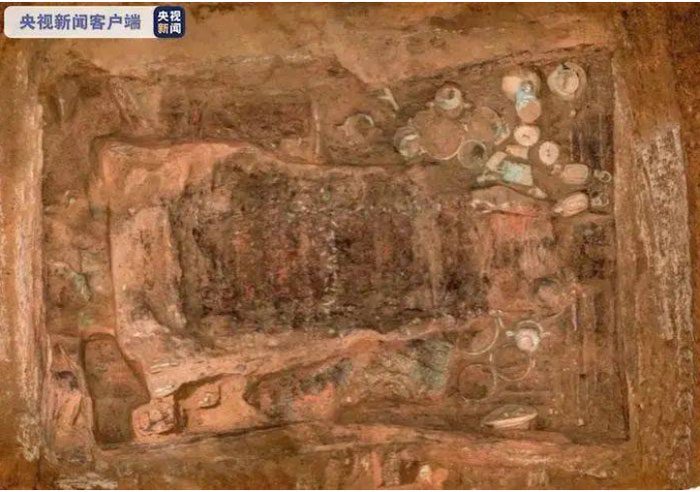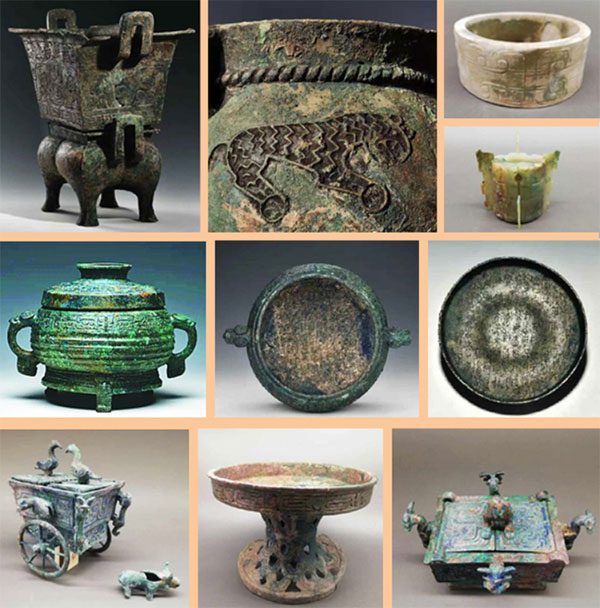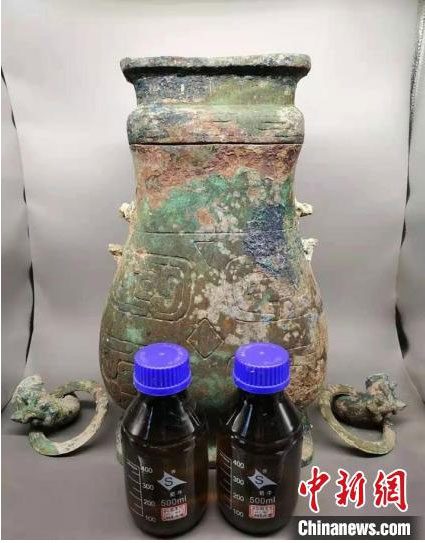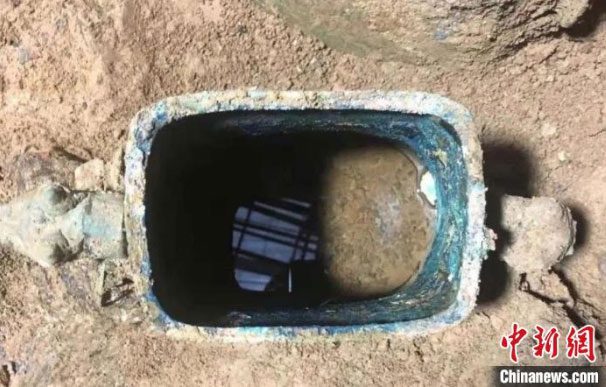Archaeologists have discovered two unusual vessels containing a strange liquid at a 3,000-year-old tomb in Shanxi, China.
On December 9, 2020, experts from the Shanxi Provincial Archaeological Institute announced significant findings during excavations at the North Baikang Tomb Complex. This site serves as the burial ground for a prominent family from the Zhou Dynasty. It is located in Yuanqu County, part of the Yuncheng Prefecture in Shanxi, China.
Based on inscriptions found on artifacts such as “We, the royal ancestors, proclaim” and “Quack, the esteemed, may the foundation be strong” in tomb number 3, alongside items in tomb number 6 inscribed with “Grand Protector of the Center” and “Central Great Guardian“, experts speculate that the head of this family bore the surname “Zhong” or “Yuan.”

Zhou Dynasty tomb complex discovered in Shanxi, China. (Photo: Xinhuanet)
Archaeologists have uncovered 9 tombs, 17 ash pits, and over 500 diverse cultural relics. Most of these artifacts are made from bronze, jade, stone, lacquer, and gold. According to experts, the excavated items are extensive, varied, and crafted with high-quality craftsmanship.

Some bronze and stone items found in the tomb complex. (Photo: Xinhuanet)
Among the 8 bronze vessels discovered, two have particularly unique designs that attracted the attention of archaeologists. Both vessels have sealed openings, and upon opening them, they contained a strange, transparent liquid. The discovery of this liquid surprised experts, as the vessels had no apparent openings, making it unlikely that water could have seeped in from outside. They decided to utilize advanced technology for analysis.


Image of the liquid found inside the two bronze vessels. (Photo: Xinhuanet).
After analyzing samples of the liquid and soil taken from the vessels, archaeologists identified volatile organic compounds and organic acids. These components are essential in wine production. Ultimately, they confirmed that the liquid in the vessels was fermented fruit wine, crafted during the Zhou Dynasty.
The results, recently announced, left everyone astonished, as this marks the first time fruit wine from thousands of years ago has been discovered. This finding will provide a new step forward in their research. Additionally, the artifacts offer further information to study and discuss the political systems, burial practices, clan connections, and social life of the Shanxi region.


















































